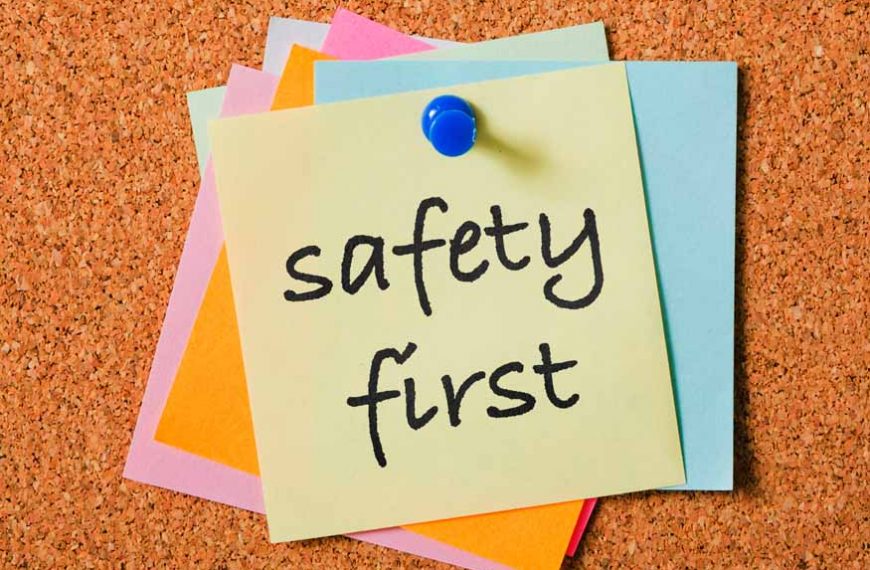Essential Safety Rules for Preschoolers
Safety is paramount for everyone, but particularly for young children who may not yet fully understand the potential risks in their surroundings. Teaching preschoolers about safety is essential in nurturing their growth and independence, all while keeping them secure. In this article, we will discuss 10 essential safety rules that every preschooler should know, encompassing general safety rules, basic safety rules, and specific safety rules for kids outside.
Understanding the Importance of Safety Rules
The importance of safety rules cannot be overstated, particularly for young children. They provide clear guidelines and instructions that help in preventing accidents. They also instil a sense of discipline and awareness in children, helping them make wise decisions.
- General Safety Rule: Never Talk to Strangers
- Basic Safety Rule: Always Hold Hands While Crossing the Street
- Always Play in Designated Areas
- Use Protective Gear While Riding Bicycles
- Don’t Touch Sharp Objects
- Stay Away from Electrical Outlets
- Follow the Teacher’s Instructions
- Keep Hands to Oneself
- Speak Up If Something Feels Wrong
- Treat Others with Respect
One of the general safety rules that preschoolers must learn is not to engage with strangers.
Example: Teach them a simple phrase such as, “I don’t talk to strangers,” and explain the importance of this rule.
Instilling basic safety rules like holding an adult’s hand while crossing the street can be life-saving.
Example: Use crosswalks and traffic lights as visual aids to help them understand when it’s safe to cross.
Safety Rules for Kids Outside
When children are playing outside, safety rules become even more crucial. Here are some specific safety rules for kids outside:
Playing in designated areas ensures that the environment is suitable and secure for children.
Example: Teach children to look for signs or symbols that mark a play area.
Wearing helmets and other protective gear minimises the risk of injury.
Example: Make a fun ritual of putting on safety gear to underline its importance.
Basic Safety Rules at Home
Home should be a safe haven, but it’s also a place where children must understand and adhere to basic safety rules.
This rule helps children recognize potential hazards in the kitchen.
Example: Keep knives and scissors out of reach and explain their proper usage to children.
Teaching this rule protects children from potential electrical hazards.
Example: Use outlet covers and demonstrate why they are in place.
General Safety Rules in School
School is another environment where general safety rules should be prominent.
Listening to and following the teacher’s instructions ensure a safe and orderly environment.
Example: Emphasise listening skills through games and activities.
This general safety rule helps promote a respectful and secure environment.
Example: Role-play different scenarios to show acceptable behaviour.
Emotional Safety
Physical safety isn’t the only concern; emotional safety is equally vital.
Teaching children to voice their feelings adds to their emotional safety.
Example: Encourage open communication and reassure them that their feelings are valid.
This rule fosters empathy and kindness.
Example: Share stories or videos that illustrate the importance of treating others well.
Technology Safety Rules
In our increasingly digital age, teaching children about technology safety is essential.
Don’t Use Gadgets Without Supervision
Teach children that using gadgets like tablets or smartphones should always be with an adult’s permission and supervision.
Example: Establish specific times for technology use, and always be present during these times to monitor their activities.
Importance of Safety Rules in Social Interaction
Learning how to interact with peers is crucial at this stage, and general safety rules apply here too.
Share and Play Fairly with Others
This rule teaches empathy and the importance of treating others as they would like to be treated.
Example: Encourage children to share toys and praise them when they do so to reinforce positive behaviour.
Safety Rules for Kids Outside During Special Occasions
Certain occasions might require additional safety measures.
Follow Special Guidelines During Outings or Field Trips
Children must know that during special events, certain rules must be followed.
Example: Before a zoo visit, educate them about staying close to the group and not feeding or teasing the animals.
General Safety Rules in Emergency Situations
It’s vital to teach children what to do in emergency situations.
Know Basic Emergency Procedures
Teaching children basic procedures like calling emergency numbers can be life-saving.
Example: Practise with a toy phone and explain when and how to dial emergency services.
Importance of Teaching Safety Early On
Understanding the importance of safety rules is not something that should wait until later in life. For preschoolers, absorbing these rules can create a foundation of awareness and caution that they can carry with them throughout their lives.
The Role of Parents and Educators
Parents and educators play a significant part in teaching children the general safety rules and basic safety rules. They must be consistent in enforcing these rules and use age-appropriate language and methods.
Example: Parents can create engaging stories or songs that encapsulate these rules, turning learning into a fun experience.
The Cultural Aspect of Safety
Different cultures may have unique safety practices, and understanding them is vital, especially for children who may interact with diverse cultural groups.
Example: Teaching children about various cultural norms related to safety can broaden their perspective and enhance their respect for others.
Conclusion
The importance of safety rules is immense, and integrating these general safety rules, basic safety rules, and safety rules for kids outside can substantially reduce risks. Education, constant reminders, and leading by example can help inculcate these vital principles in our young ones, setting them on a path to a safe and responsible life.
By instilling these essential safety measures, we aren’t merely protecting our children; we are empowering them to be aware, responsible, and capable individuals. It’s not just about restricting or controlling them but about educating them on why these rules exist and how they help. The process of teaching these rules can be engaging and interactive, turning something serious into a fun and educational experience and at EuroKids Preschool, we ensure to make the learning experience full of fun and adventures for the little ones.
















